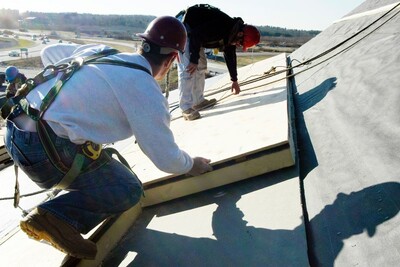
With increased insulation requirements in recent versions of the energy codes, continuous insulation on the roof can allow the owner to meet thermal insulation requirements in both low-slope roofs as well as cathedral ceilings and conditioned attics.
This research report provides a central location for the identification of foam sheathing products that have been approved for use as an air barrier material in an air barrier assembly. Available as a sealed code compliance report.
Low-slope roof general guidance. Intended to give a relatively brief introduction to roofing, to weigh pros and cons of various materials that are not available in other reference documents, and to provide some suggestions for enhancements beyond systems that simply comply with code and warranty minimums.
Details and information on the use of CI to avoid thermal bridges
Steep-slope roof insulation above deck general guidance. Exterior insulation permits high R-value to be achieved without necessarily disturbing interior finishes. The best time to implement this approach from a cost perspective is when an existing roof is being replaced.
Advice on insulating vented and unvented low-slope roofs applicable to both commercial and residential buildings.
Choosing materials wisely is a good start. But success comes from careful attention to movement joints, intersections, and terminations.
Information on the use of Polyiso in roofing applications
Information on the use of XPS in commercial roofing applications
Information on the use of EPS in roofing applications